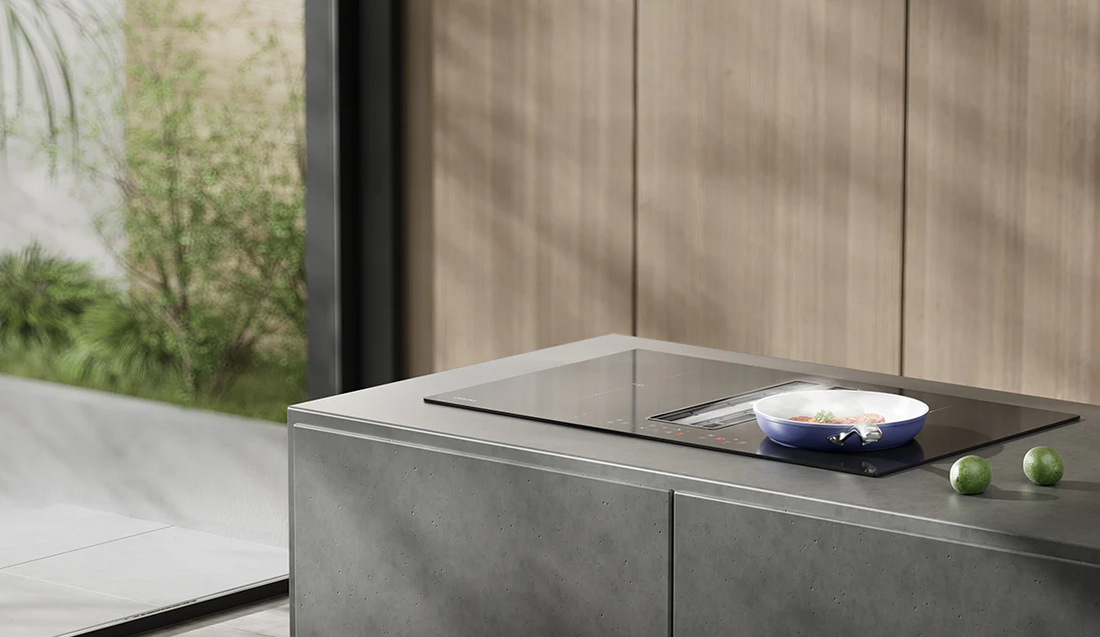In modern kitchens, the extractor hob has become an essential appliance, seamlessly combining the functionalities of a hob and an extractor fan. This innovation not only optimizes space but also enhances the cooking experience by efficiently removing smoke and odors right at the source. In this comprehensive guide, we will delve into the intricacies of extractor hobs, their benefits, installation tips, maintenance, and the best models available on the market.

Understanding Extractor Hobs
Extractor hobs, also known as venting hobs, are a clever integration of a cooking hob and a downdraft extractor. They are designed to eliminate the need for a separate cooker hood, thus offering a sleek and modern solution for contemporary kitchens. The extraction system is built into the hob itself, ensuring that cooking vapors are captured directly from the source.
Key Features of Extractor Hobs
- Integrated Ventilation: Unlike traditional hobs, extractor hobs come with an integrated ventilation system that efficiently extracts steam, smoke, and cooking odors.
- Space-Saving Design: By combining two appliances into one, extractor hobs save valuable kitchen space, making them ideal for open-plan layouts and smaller kitchens.
- Advanced Filtration: Equipped with powerful filters, these hobs can purify the air by trapping grease and particles, ensuring a cleaner cooking environment.
- Innovative Control Systems: Many models feature touch controls and smart sensors that adjust the extraction power based on the intensity of cooking.
Benefits of Using Extractor Hobs
Enhanced Aesthetic Appeal
Extractor hobs contribute to a minimalist and streamlined kitchen design. Their integration into the countertop eliminates the need for bulky overhead extractor fans, resulting in a clean and unobstructed view.
Improved Air Quality
By capturing and filtering out cooking fumes at the hob level, these appliances significantly improve kitchen air quality. This is particularly beneficial in open-plan homes where odors and smoke can easily spread to other living areas.
Energy Efficiency
Modern extractor hobs are designed with energy efficiency in mind. They use advanced motor technologies and intelligent extraction systems to reduce energy consumption while maintaining high performance.
Ease of Cleaning
With fewer components exposed to cooking splatter, extractor hobs are generally easier to clean than traditional setups. Many models feature removable and dishwasher-safe filters, simplifying the maintenance process.
Installation Tips for Extractor Hobs
Proper installation is crucial for the optimal performance of extractor hobs. Here are some key considerations:
Ventilation Requirements
Ensure that the kitchen has adequate ventilation to support the extractor hob. This may involve planning for ducting or ensuring sufficient airflow for recirculation models.
Electrical and Plumbing Connections
Extractor hobs require both electrical and, in some cases, plumbing connections. It is essential to consult with a professional to ensure these connections meet safety standards and are correctly installed.
Countertop Specifications
The countertop must be cut to precise dimensions to accommodate the hob. Additionally, the material of the countertop should be heat-resistant and capable of supporting the weight of the appliance.
Positioning
The hob should be positioned in a location that allows for easy access and use. Consider the layout of your kitchen and ensure that the placement of the hob does not interfere with other appliances or workspaces.
Maintaining Your Extractor Hob
Regular maintenance is essential to ensure the longevity and efficiency of your extractor hob. Follow these tips to keep your appliance in top condition:
Cleaning the Hob Surface
Use a non-abrasive cleaner and a soft cloth to wipe down the hob surface after each use. Avoid using harsh chemicals that could damage the finish.
Filter Maintenance
Filters should be cleaned or replaced regularly, depending on the manufacturer’s recommendations. Grease filters can often be washed in the dishwasher, while charcoal filters may need periodic replacement.
Inspecting the Ventilation System
Periodically check the ducting and ventilation system for any blockages or build-up of grease. Ensuring that the airflow is unobstructed will help maintain the hob’s extraction efficiency.
Professional Servicing
Schedule regular servicing by a professional technician to ensure that all components of the extractor hob are functioning correctly. This can help prevent potential issues and extend the life of the appliance.
Conclusion
Extractor hobs represent a significant advancement in kitchen technology, providing a perfect blend of style, efficiency, and functionality. By understanding their benefits, installation requirements, and maintenance needs, homeowners can make informed decisions and enjoy a superior cooking environment.

